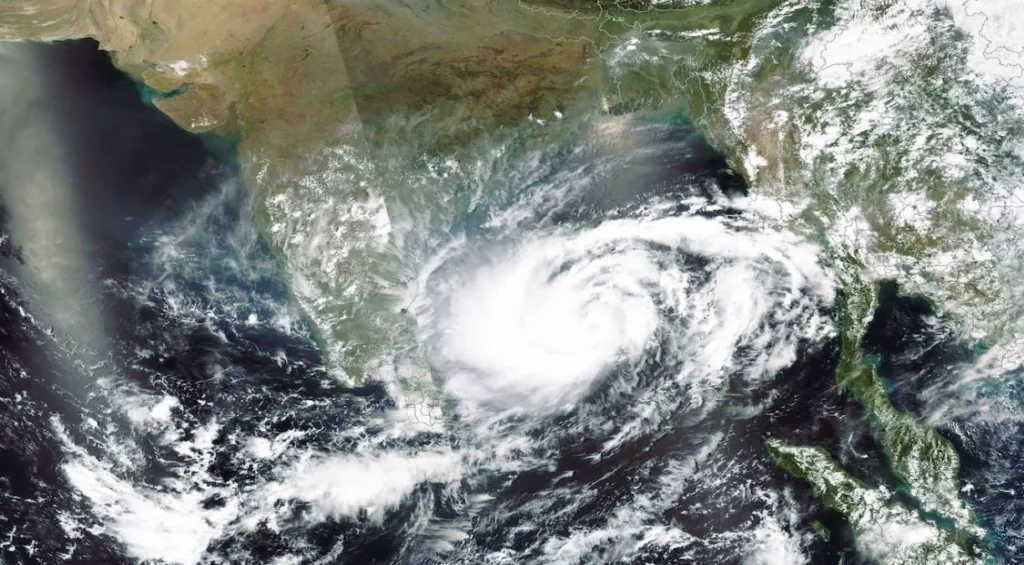In response to the imminent threat posed by cyclone ‘Michaung’ in the Bay of Bengal, the National Crisis Management Committee (NCMC), chaired by Cabinet Secretary Mr Rajiv Gauba, convened today to assess the readiness of state governments and central ministries/departments.
The India Meteorological Department (IMD) briefed the committee on the current status of cyclonic storm ‘Michaung.’ As of the latest report, the storm, moving northwestwards at a speed of 9 kmph, is centered at latitude 11.8°N and longitude 82.2°E. It is situated approximately 260 km east-southeast of Puducherry, 250 km southeast of Chennai, 380 km south-southeast of Nellore, 490 km south-southeast of Bapatla, and 500 km south-southeast of Machilipatnam.
Projections indicate that the cyclonic storm is likely to intensify further and approach the west-central Bay of Bengal off the south Andhra Pradesh and adjoining north Tamil Nadu coasts by the forenoon of 4th December.
Subsequently, it is expected to move nearly northwards, tracking parallel and close to the south Andhra Pradesh coast, ultimately making landfall between Nellore and Machilipatnam during the forenoon of 5th December. At that point, it is anticipated to be a Severe Cyclonic Storm with a maximum sustained wind speed of 90-100 kmph, gusting to 110 kmph.
Cabinet Secretary Mr Rajiv Gauba stressed the critical importance of proactive measures in light of the IMD’s latest forecast. He underscored the need to prioritize the safety of citizens, ensuring timely evacuation from vulnerable areas, and minimizing the risk of loss of life.
Chief Secretaries of Tamil Nadu, Odisha, Puducherry, and the Special Chief Secretary of Revenue & Disaster Management, Andhra Pradesh, provided updates on the preparatory measures in their respective states. Low-lying areas have been identified, and evacuation procedures to relief centers have commenced. Local alerts, disseminated through SMS and weather bulletins in regional languages, are being utilized to keep the public informed.
